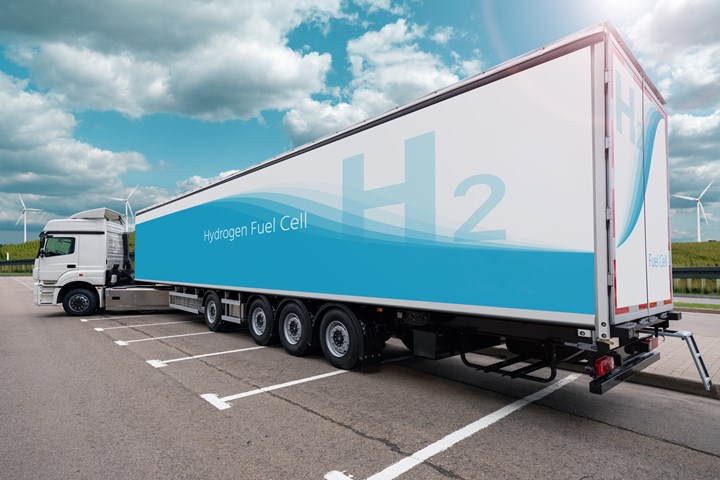Hexagon Purus to assemble, deliver complete vehicle integration for hydrogen-powered trucks
The awarded contract, taking advantage of the company’s Type IV high-pressure cylinders, battery packs and vehicle systems integration, offerings join seven other commitments announced this year.
Share
Read Next

Photo Credit: Getty Images
Hexagon Purus (Ålesund, Norway), a provider of hydrogen Type IV high-pressure cylinders, battery packs and vehicle systems integration for fuel cell electric and battery electric vehicles (BEVs), has been contracted by two unnamed major truck manufacturers in North America to deliver complete vehicle integration of two hydrogen-powered Class 8 trucks (see “Hexagon Purus continues drive toward zero-emissions with battery-electric trucks contract” for similar developments). The total sales value is approximately $2.2 million (approx. NOK 20 million).
Per the contract, Hexagon Purus will assemble and deliver the complete trucks which involve integration of an electric drivetrain, a fuel cell module as well as the company’s ProCab Hydrogen Storage system and Hexagon Purus ProPack high energy density Li-ion battery packs. The trucks will be delivered starting Q2 2022.
“The momentum for zero-emission mobility continues to strengthen. We see growing interest in our fuel cell electric drivetrain technologies, and hydrogen will play an important role in the future of trucking,” says Todd Sloan, EVP Systems, Hexagon Purus. “We are pleased to be selected by major OEMs once again, and to be trusted with complete vehicle integration.”
This contract follows several others awarded to Hexagon Purus, including a long-term supply agreement for fuel cell buses, delivery of a hydrogen fuel-cell electric (FCEV) Class-8 drayage truck, Class 6 and 7 FCEV trucks, composite storage systems for hydrogen vehicle prototypes and two separate agreements for Type IV hydrogen cylinder tanks.
Related Content
-
Aptera joins forces with C.P.C. Group to accelerate solar EV production
Specialized composite bodies are being produced in Modena, Italy, for Aptera’s BinC vehicle, enabling eventual manufacturing ramp-up of 40 vehicles/day to meet demand targets.
-
On the radar: Innovations in composite battery enclosures
A look at recently reported design, material and process innovations for composites-intensive battery enclosures, developed to support the ramp-up of EV and AAM vehicles.
-
Composites end markets: Batteries and fuel cells (2024)
As the number of battery and fuel cell electric vehicles (EVs) grows, so do the opportunities for composites in battery enclosures and components for fuel cells.












